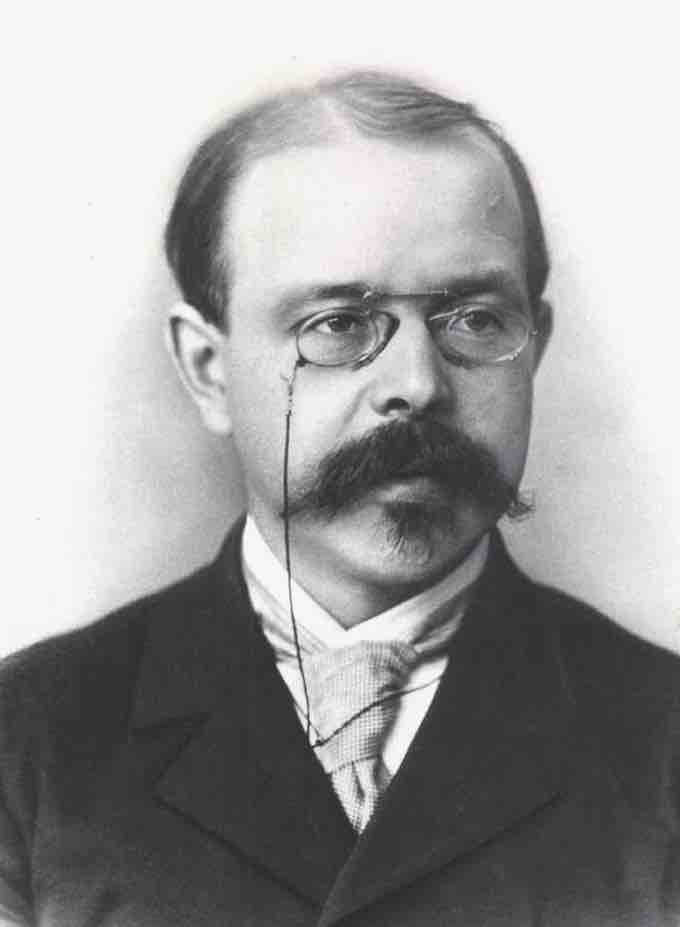Reduction Potential
In order to calculate thermodynamic quantities like change in Gibbs free energy

Walther Nernst
A portrait of Walther Nernst.
The Nernst equation allows the reduction potential to be calculated at any temperature and concentration of reactants and products; the standard reaction potential must be measured at 298K and with each solution at 1M.
The Nernst equation is:
Where the terms are as follows:
- E is the reduction potential for the specified non-standard state
- E0 is the standard reduction potential
- R and F are the gas and Faraday constants, respectively
- n is the number of electrons transferred in the reaction
- Q is the reaction quotient
$\frac{C^cD^d}{A^aB^b}$ . The uppercase letters are concentrations and the lowercase letters are stoichiometric coefficients for the reaction$aA + bB \rightarrow cC + dD$
If T is held constant at 298K, the Nernst equation can be condensed using the values for the constants R and F:
It can be further simplified if the reaction has reached equilibrium, as in that case Q is the equilibrium constant K:
This equation allows the equilibrium constant to be calculated just from the standard reduction potential and the number of electrons transferred in the reaction.
Gibbs Free Energy Charge
The relationship between the Gibbs free energy change and the standard reaction potential is:
In this equation:
-
$\Delta G$ is the change in free energy - n is the number of moles
- E0 is the standard potential
- F is the Faraday constant